 MONTGOMERY COUNTY PUBLIC SCHOOLS
MONTGOMERY COUNTY PUBLIC SCHOOLS
 MONTGOMERY COUNTY PUBLIC SCHOOLS
MONTGOMERY COUNTY PUBLIC SCHOOLS

Updated April 15, 2021
2. Inform
2. Inform
2. Inform
Face coverings are masks or material worn over the nose and mouth to block and slow down respiratory droplets released when exhaling, coughing, sneezing, talking, shouting, and singing. When an infected person wears a face covering, the face covering acts as a barrier (or source control) to that person's respiratory droplets. This protects other people from the infected person's respiratory droplets. Face coverings are not considered respiratory protection. They do not prevent the wearer from inhaling particles from the environment as effectively as a properly-fitted respirator, and they are not tested to any accepted standard for respiratory protection. Remember the saying, "My mask protects you, your mask protects me."
Anyone who enters an MCPS facility is required to wear a face covering. This includes all MCPS students, employees, contractors, volunteers, and visitors over the age of two (2). Students and employees who are unable to wear a face covering because of an impairment, disability, or medical condition may request an exemption, permitting them to enter MCPS facilities without a face covering. Employees may request an ADA accommodation using MCPS Form 270-6. Students and families may work with their IEP teams to determine if they should not wear a face covering at school.
Face coverings are required as part of MCPS' ongoing efforts to protect students, employees, visitors, and the community from COVID-19. Face coverings are also required for compliance with county requirements (Montgomery County Executive Order 122-20 AM).
Please remember that face coverings are not a substitute for 6-foot physical distancing. Even while wearing a face covering, people must still stay 6 feet apart to effectively protect against COVID-19.
Face coverings must be worn at all times at MCPS facilities, with certain exceptions. Exceptions (when face coverings do not need to be worn, but physical distancing is still required):
Additional exceptions may be determined on a case-by-case basis by the Office of Operations and the Department of Systemwide Safety and Emergency Management.
MCPS will provide face coverings, meeting CDC and county recommendations, for all MCPS students and employees. Students and staff may bring in their own face coverings, if they meet MCPS requirements.
Face coverings must:
Face coverings with air filters may be used; however, use only filters designed for face coverings. Do not make your own face covering filters from filters designed for machines and equipment (vacuum bags, HVAC/furnace filters, automotive air filters, industrial equipment filters, etc.) because these filters can contain fiberglass fibers or they can be treated with tackifier chemicals (sticky chemical products designed to help filters trap air particles), antimicrobial chemicals, and fire retardant chemicals. Inhaling fiberglass fibers or tackifier, antimicrobial, and fire retardant vapors can be harmful.
Acceptable types of masks and face coverings:
Unacceptable types of masks and face coverings:
Respirators, like N95s, and surgical masks intended for medical use should not be used for general use – these should be reserved for people who need them, like first responders and medical professionals.
Double masking, wearing a mask on top of another mask, is permitted if both masks meet MCPS requirements. Double masking should NOT be performed if:



Before putting a face covering on, identify the outside and inside, top and bottom. Remember to only handle face coverings with clean hands before putting them on:
Putting the face covering on:



Wearing the face covering:
Taking the face covering off:



Test the fit of the face covering:
When you have a new face covering, check that it fits you properly before wearing it in public. Everyone's face is shaped differently, so not every face covering will fit you properly. Some will be too tight and others will be too loose. You can check the fit of a face covering by putting it on and seeing if it moves out of place, slides down off your nose, or creates discomfort while:
If the face covering does not stay snug and in place, try adjusting the fit (if it is adjustable) or replace it with a different face covering that fits better.
Practice:
If you are not used to wearing a face covering all day, it can be uncomfortable when you first start wearing one all day at work or school. You can practice wearing a face covering at home before you need to start wearing it all day in public. You can build up your comfort level by wearing a face covering for longer and longer periods of time over several days or a few weeks.
Common problems:
It is important to keep your face covering clean. If you don't, you can cause skin irritation or even get sick from bacteria or mold that can grow on a dirty face covering. To keep your reusable cloth face coverings clean, you SHOULD:
Never apply chemical disinfectants (like bleach, alcohol, disinfectant wipes) to a face covering, because chemical residue can cause skin and respiratory irritation when the face covering is put back on.
If your face covering uses a filter that is inserted into a filter pocket, replace the filters periodically and when they get wet, dirty, or produce a noticeable odor.
Disposable masks should be discarded when dirty or wet. Even if not visibly dirty, you should discard disposable masks at the end of each day when worn. They may be placed in regular trash.
More information about face coverings is available from these sources:




Keeping your hands clean is one of the most important steps you can take to avoid getting sick and spreading germs to others. Many diseases and conditions are spread by not washing hands with soap and clean, running water. Regularly washing hands with soap and water not only keeps you healthy, but prevents the spread of illness to others.
Germs can spread from other people or surfaces when you:
The best way to keep our hands clean is to regularly wash them with soap and water. Handwashing with soap and clean water physically removes germs and other contaminants. Effective handwashing can be done using any hand soap and clean water. Antibacterial soap is not needed and hot water is not needed (warm and cold water work too).
When you do not have easy access to soap and clean water, you can use an alcohol-based sanitizer containing at least 60% alcohol. Hand sanitizer kills germs, but does not remove contaminants, like chemicals, dirt, and grease. As a result, hand sanitizer should not be used instead of handwashing with soap and water whenever your hands need to have potentially harmful contaminants removed. Wash your hands with soap and water instead of using hand sanitizer:
When washing your hands, you can use any hand soap with clean water. Antibacterial soap is not needed, and any temperature water is okay. To wash your hands:
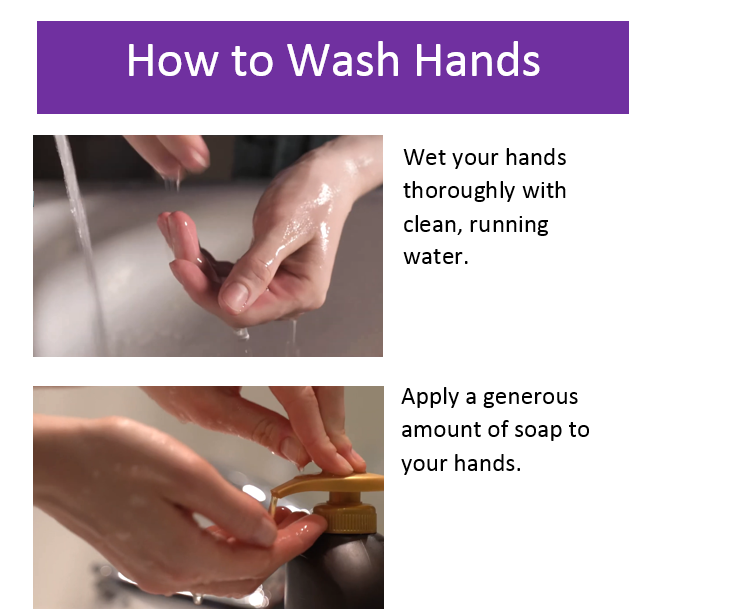

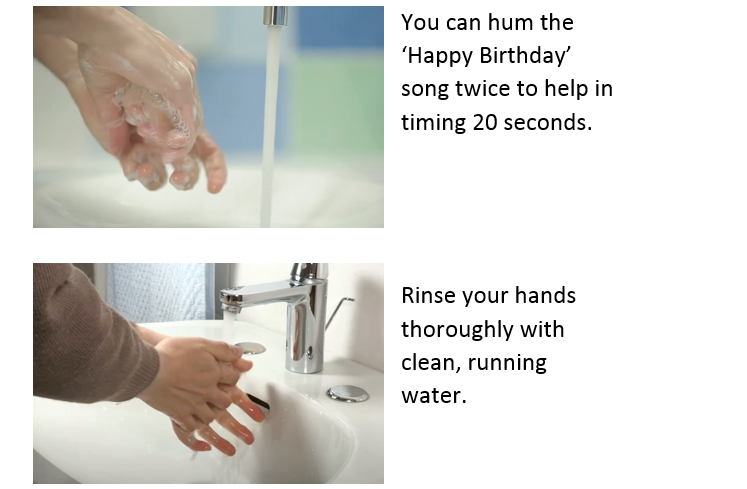
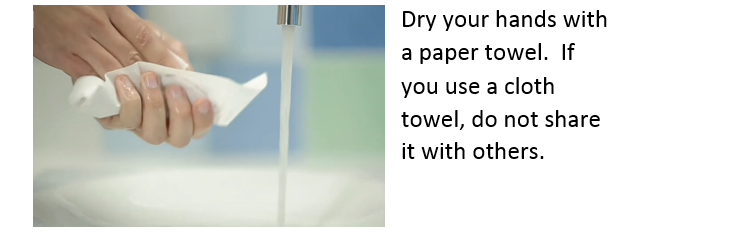
In order to effectively kill germs, use an alcohol-based hand sanitizer containing at least 60% alcohol. MCPS will have ample supplies available throughout offices and schools.
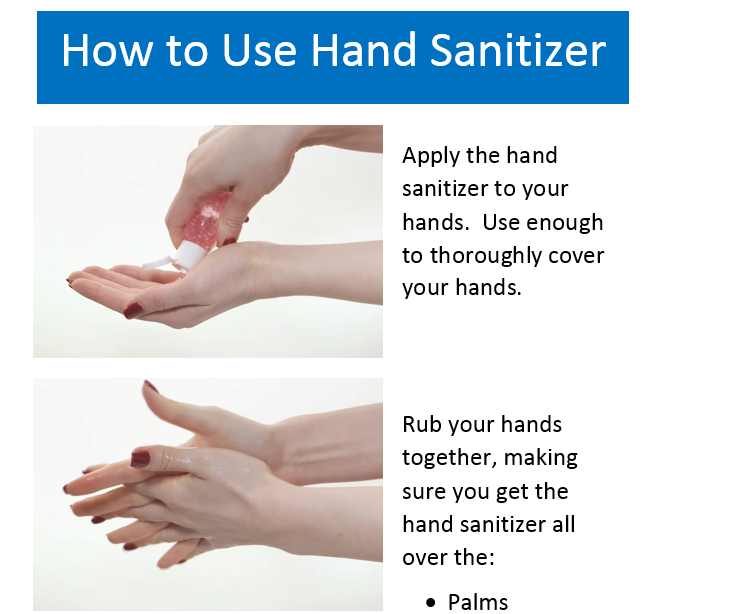
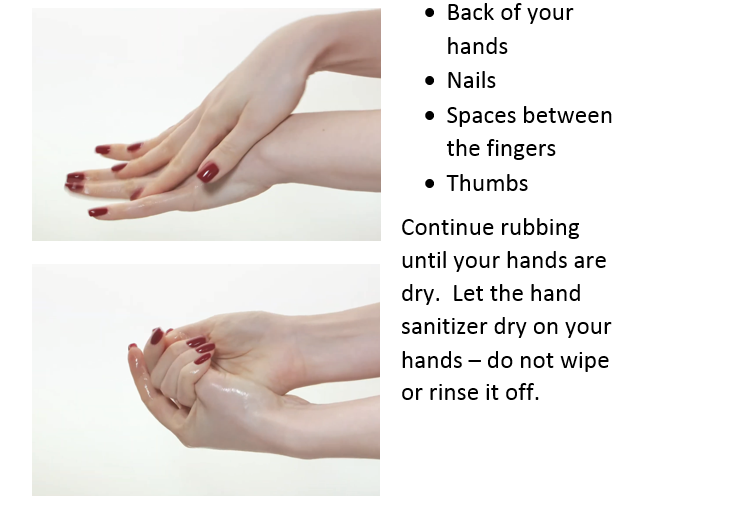
You should clean your hands whenever necessary to protect yourself from hazardous substances, including:
*Wash hands with soap and water, do not use hand sanitizer.
Fire safety
Alcohol-based hand sanitizer is flammable, so it is important to use and store it safely. Always keep hand sanitizer away from heat, sparks, and flames. Allow your hands to completely dry after applying hand sanitizer if you are going to work with heat, flames, static electricity, or sparks. And be careful not to spill hand sanitizer on your clothes or any equipment.
MCPS schools and facilities must ensure hand sanitizer is not misused and must also comply with fire safety requirements. These requirements include:
Chemical safety
Keep hand sanitizer in the manufacturers’ containers. Do not transfer it to unlabeled bottles or other containers because people might not know what it is and some containers, which are not designed to hold hand sanitizer, can leak. For your safety and to ensure effectiveness, do not try to make your own hand sanitizer and never mix different hand sanitizers together. This can result in a mixture that does not kill germs effectively or is hazardous.
Supervise young children when they use hand sanitizer
Methanol contamination
Some hand sanitizers have been recalled for being contaminated with methanol, also known as wood alcohol, a toxic chemical that can cause harm when absorbed through the skin or swallowed. In some cases, swallowing methanol-contaminated hand sanitizer can cause blindness or death.
The U.S. Food & Drug Administration (FDA) has compiled a list of hand sanitizers that have been recalled for methanol contamination. You can check if your hand sanitizer is on FDA’s recall list: https://www.fda.gov/drugs/drug-safety-and-availability/fda-updates-hand-sanitizers-consumers-should-not-use. If you do have a hand sanitizer product that is on the FDA recall list, you should stop using it immediately. Discard it or return it to the seller. All hand sanitizers supplied by MCPS have been checked against this list, and recalled products are not purchased.
Skin dryness and irritation
To prevent hand dryness or skin cracking, apply moisturizer or hand lotion throughout the day. You can also try washing your hands with cool or warm water instead of hot. Consult your healthcare provider if you have concerns.
More information about hand hygiene is available from these sources:

The CDC advises that minimizing close face-to-face contact with others is the best way to reduce the spread of COVID-19. For the purposes of contact tracing, close contact is defined as being within 6 feet of an infected person for a total of 15 minutes or longer during a 24-hour period. Examples of close contact:
According to the CDC, being within 6 feet of an infected person for 15 minutes or more during a 24-hour period means you were in close contact regardless of whether or not you and the other person wore a face covering. No face covering can ensure 100% protection from respiratory droplets that might contain the COVID-19 virus.
Physical distancing, also called “social distancing,” is the practice of staying at least 6 feet (about 2 arms’ lengths) away from other people. By consistently practicing physical distancing in public, you will reduce the possibility that you will become sick from contagious diseases, like the flu, colds, and COVID-19.
To practice physical distancing, stay at least 6 feet (about 2 arms’ length) apart from other people who are not from your household in both indoor and outdoor spaces. If members of your household are sick or have tested positive for COVID-19, you should try to stay 6 feet apart from them also, if possible.
To protect yourself from the COVID-19 virus, you should practice physical distancing along with:
Remember, wearing a face covering or mask is not a replacement for physical distancing. Even if everyone wears a face covering, you still need to stay 6 feet apart to effectively reduce the spread of COVID-19.
By consistently practicing physical distancing in public, you will reduce the possibility that you will become sick or spread contagious diseases, like the flu, colds, and COVID-19.
We all release small respiratory droplets whenever we talk, sing, yell, cough, or sneeze. According to the CDC, COVID-19 spreads mainly when an infected person releases virus-containing respiratory droplets which land in, or are inhaled into, the noses and mouths of people nearby. By staying at least 6 feet apart and wearing masks, we can dramatically reduce everyone’s exposure to these respiratory droplets. This is especially important because the virus can be spread by infected people who may not know they are infected because they do not have any serious symptoms.
If you are sick or have been in close contact with someone who has tested positive for COVID-19, you should stay at home and contact your supervisor. Close contact is defined as being within 6-feet of an infected person for 15 minutes or more during a 24-hour period regardless if face coverings were worn or not.
Please note, even if you receive the COVID vaccine, the CDC currently advises that you should continue the practice of mask wearing, hand washing, and physical distancing.
As MCPS reopens schools and buildings, classrooms and other work spaces are being transformed to foster physical distancing. With preparation and creative thinking, most work tasks can be performed while practicing physical distancing. Depending on the task, this might require modifications to the workplace or changes in work practices. Signs and floor markings can also be used to continuously remind everyone to practice physical distancing when at MCPS facilities.
It is a challenge to maintain physical distancing, but we must gently remind ourselves, our co-workers, and our students to keep at least 6 feet apart. If others are too close to you, take a few steps back and gently remind them that we must adhere to physical distancing, even when masks are worn. Remember, wearing a face covering or mask is not a replacement for physical distancing.
When evaluating a task for which you believe physical distancing is not possible, or might be challenging, ask yourself these questions:
Examples of how tasks can be performed by MCPS employees with physical distancing:
Being closer than 6 feet from others for very brief periods of time, like walking past people in a hallway or restroom, is not believed to increase the risk of getting infected. There might be times, however, when you need to be close to others for an extended period of time, such as when:
To protect employees engaged in activities like these, MCPS has developed procedures involving specialized training, personal protective equipment, modified work practices, and hiring trained and equipped contractors.
When rearranging and relocating furniture, workstations, materials, and equipment to support physical distancing, it is important not to create new hazards, by:
If your facility designates one-way halls or stairways, all students, staff, and visitors must be aware that people should travel in any direction necessary during an emergency evacuation to ensure everyone can exit the building in a rapid and orderly manner. This should be stressed during emergency drills.

Building service staff are cleaning and disinfecting building and room surfaces in all MCPS schools and facilities using EPA-approved List N chemicals, which are effective for inactivating the COVID-19 virus. Special attention is given to surfaces that are touched frequently, such as door handles, light switches, hand rails, faucet handles, water bottle filling stations, and elevator buttons. Restrooms are also cleaned and disinfected more frequently throughout the day. Additional information about building cleaning and disinfection procedures can be found at the Department of Facilities Management's Facilities and COVID-19 webpage. To assist in ensuring clean and healthful buildings, all MCPS employees will also be provided cleaning and disinfectant products that they may use for their rooms and workstations.
As soon as an MCPS Division of Maintenance and Operations area supervisor is informed that a person who has either been exposed to or has tested positive for COVID-19 has been inside an MCPS facility, a confidential COVID-19 Exposure Report is created. Trained building service teams respond by performing an intense cleaning and disinfection of every area where that person spent time. Special equipment, like electrostatic sprayers, allow the virus-killing chemicals to cover every surface of an impacted area. Additional information can be found at the Department of Facilities Management's Facilities and COVID-19 webpage.
Various cleaning and disinfectant products have been provided to MCPS schools and facilities. Product SDSs are below:






 (for building services use)
(for building services use) (for building services use)
(for building services use) (for building services use)
(for building services use)
Information about building ventilation; Indoor Air Quality (IAQ); heating, ventilation, and air-conditioning (HVAC) air filters; and portable air cleaners can be found at the Department of Facilities Management's Facilities and COVID-19 webpage. Information about HVAC air filter upgrades and portable air cleaners can also be found here.
PPE kits (masks, gloves, hand sanitizer, disinfectant wipes) have been delivered to all schools to support staff and any others entering the building. These kits were compiled using a formula based on the number of staff members per building, with a percentage of overage to accommodate any additional need.
Distribution of student masks is based on school enrollment numbers, with a percentage of overage. Initial school allocations will provide each student and employee with two cloth masks per quarter, and additional disposable masks to supplement throughout the year. The Department of Materials Management will replenish the PPE kit supplies on a quarterly basis directly to schools and will work with principals if additional needs arise. The Division of Maintenance and Operations will continue to order supplies directly through FMS for all building service staff throughout the district.
PPE (including goggles, faceshields, and gowns) and specialized face coverings (such as clear masks) needed for special interactions (including working with special education students and students/staff with disabilities) have been and will continue to be purchased and allocated according to specific program, staff, or student needs.
Information about applying for Americans with Disabilities Act (ADA) workplace accommodations, Families First Coronavirus Response Act (FFCRA) leave, and Family Medical Leave Act (FMLA) leave can be found here.
Under construction.
Schools will work closely with School Health Services (SHS) health room staff and the Montgomery County Department of Health and Human Services (DHHS) when students become sick at school or report COVID-19 exposure. Symptoms of COVID-19 include: cough, fever, headache, diarrhea, vomiting, shortness of breath, sore throat, loss of taste or smell, feeling tired, and unusually poor appetite. Symptoms requiring immediate care include: trouble breathing, persistent pain or pressure in the chest, new confusion, inability to wake or stay awake, and bluish lips or face.
If a student displays signs of illness consistent with COVID-19 or reports to school having been exposed to COVID-19:


1. Separate the student
If a student shows EMERGENCY SYMPTOMS (trouble breathing, persistent pain or pressure in chest, new confusion, inability to wake or stay awake, bluish lips or face), IMMEDIATELY call 911 and notify your administrator and SHS staff.
2. Inform
3. Identify Close Contacts
4. Clean and Disinfect
5. Plan for Virtual Instruction
IMPORTANT REMINDER: You MUST contact the School Health Services health professional prior to sending ANY student (COVID-19 like symptoms, or other injury or illness) to the identified health area.
Download the Teacher's Quick Reference Guide for when a student displays COVID-19 symptoms in the classroom 
Support to students in the health room will continue to be provided by the School Health Room Technician (SHRT) or School Community Health Nurse (SCHN), based upon their assignment.
Students with Individualized Health Care Plans who require specialized care, medication administration or emergency care will be seen in the health room. Parents will be required to bring in medications needed to support their student during the school day prior to or on the first day of school.
ALL staff members MUST call or contact the health room prior to excusing a student from the classroom. Students should NOT be sent directly to the health room without consultation from School Health Services (SHS) or other on-site healthcare employees.
If a student has a NON-COVID related health concern or minor injury:
1. Contact the health room
2. In-Classroom Care Needs
Download the NON-COVID Related Student Health Care Needs: QUICK REFERENCE GUIDE 
Under construction.
Under construction.
Under construction.
Under construction.
To prevent congregating and support physical distancing, the number of people allowed in a restroom at one time will be limited. Schools may monitor restroom use, as needed, to prevent students from congregating. Some teachers routinely take their classes to the restroom before specials or after recess, which can assist with restroom monitoring. Schools should consider providing single-access restrooms for special population students who have difficulty practicing physical distancing in the restroom. Handwashing before and after restroom use should continue to be encouraged.
Physical barriers should not be installed in restrooms, but signage may be used to support distancing at sinks and urinals. To ensure good ventilation, schools and facilities should continue performing routine maintenance for exhaust fans that serve restrooms. It is not necessary to clean and disinfect restroom touchpoints (such as faucets and toilet handles) between uses.
Schools and facilities should minimize congestion and congregating in hallways and stairways, and physical distancing should be practiced. Hallways and stairways may be designated for one-way traffic; however, this is not required. Being closer than 6 feet from others for very brief periods of time, such as when walking past others in hallways and stairways, is not believed to increase the risk of infection (especially when people are wearing face coverings).
Schools can reduce congestion by having students remain in classrooms as much as possible and by staggering class dismissal. Floor decals can be used as visual distancing cues. Signage, training, and practice can be used to educate students and staff about expectations for hall/stair travel (walk to the right, don’t congregate, physically distance front-back and side-side, keep face coverings on, etc.). Schools should consider having staff monitor and provide direction, at least for a period following reopening.
If schools and facilities designate one-way hallways or stairways, they must ensure students and employees are aware these restrictions do not apply during emergencies, such as building evacuation or lockdown. During emergencies, building occupants should always take the closest and safest path of travel.
Under construction
Students will be permitted to eat in a variety of locations throughout schools, including classrooms and large spaces, such as the cafeteria, as long as 6-foot physical distancing and appropriate seating arrangements are implemented (students should not be seated facing each other while eating). Students may bring their own meals or receive grab-and-go meals served by the school. To support good COVID-19 exposure prevention practices, handwashing will be required before and after eating and students will not be permitted to share food. Additionally, schools will continue to review food allergy and 504 plans to ensure the safety of students with food allergies.
In addition to providing meals for students receiving in-person instruction, MCPS will continue to provide breakfast and lunch meals to students at designated food distribution sites throughout the county. MCPS employees involved in meal distribution use face coverings, physical distancing, and hand hygiene to minimize exposure risk for customers and employees. Face coverings and gloves are also used, in addition to standard food safety practices, during meal preparation. Information about meal service programs can be found here.
Recess and play is an important part of elementary school. The following guidance is provided to schools to inform their planning.
Outdoor play area use will be permitted. Schools are responsible for ensuring students perform hand hygiene before and after use and maintain 6' distancing. Schools will need to be able to limit group sizes on playground equipment and have enough supervision to be able to maintain distancing at all times.
Students may play together and on playground equipment.
Playground hard space does not need to be taped off.
Cones and other demarcation aides should be used to create stations or play areas that encourage reduced numbers in common play areas. Schools are encouraged to use a station approach to have a variety of designated play areas for students to use.
Schools may want to consider a rotating schedule to outdoor recess in order to avoid large numbers of students competing for the same play space and making physical distancing difficult. For example, a grade level may be assigned to outdoor recess on certain days of the week and indoor or gym play time on other days to reduce the load on outdoor only play areas.
Face coverings should be worn properly at all times by students and staff. Consider stocking spare masks so students can replace face coverings that become wet, dirty, or damaged during play. Only masks with earloops should be worn when playing on playground equipment. Gaiters, bandanas, masks with head ties or head straps, and masks with earloops equipped with 'ear saver' straps or ties that wrap around the back of the head should not be worn because they can create a strangulation hazard if they get caught on the equipment.
Handwashing before and after recess is essential and required. Playground equipment cleaning with basic cleaning supplies (like soapy products, water) is generally sufficient. If there is suspected contact involving an infected person, targeted disinfection can be performed on high-touch components like grabs bars and rings and railings. A challenge with disinfection is that there is a possibility for slippery residue, which creates safety hazards, and component damage from regular exposure to disinfectant products (especially for ropes and bolts). Spillage of disinfectant on the wood chips, which some students put in their mouths, is also a concern.
Shared items (like balls) may be used as long as contact is restricted to feet/legs. At this time, shared items must be cleaned (or isolated for 3 days) by school staff after recess. Cleaning may be performed using soap and water or MCPS-approved cleaning/disinfection products. Face coverings, 6' distancing, and hand hygiene before and after recess must continue to be practiced by all students and staff.
Hand sanitizer may be used when hands are not visibly dirty, greasy, or sticky. Consider bringing hand sanitizer to recess so it is readily available.
Staff are encouraged to develop a hand signal to alert students when they are too physically close to peers. Staff are not expected to use yard sticks or tape off play space, rather use judgment and best guidance to support safe and appropriate play. Students who demonstrate challenges with physical distancing should be approached through a teachable moment approach and non-disciplinary, unless it appears to be willful disobedience of understood expectations.
Consider the use of portable megaphones or other auditory alert sounds in lieu of whistles for attention signals.
Under construction.
Under construction.
Safety and health procedures for MCPS Athletics can be found at the COVID-19 Athletics Information webpage.
Under construction.
Under construction.
(Note: All teachers have received recommendations and training from the PreK-12 Science team.)
Elementary:
Secondary:
(Note: All teachers have received recommendations and training from the PreK-12 Science team.)


